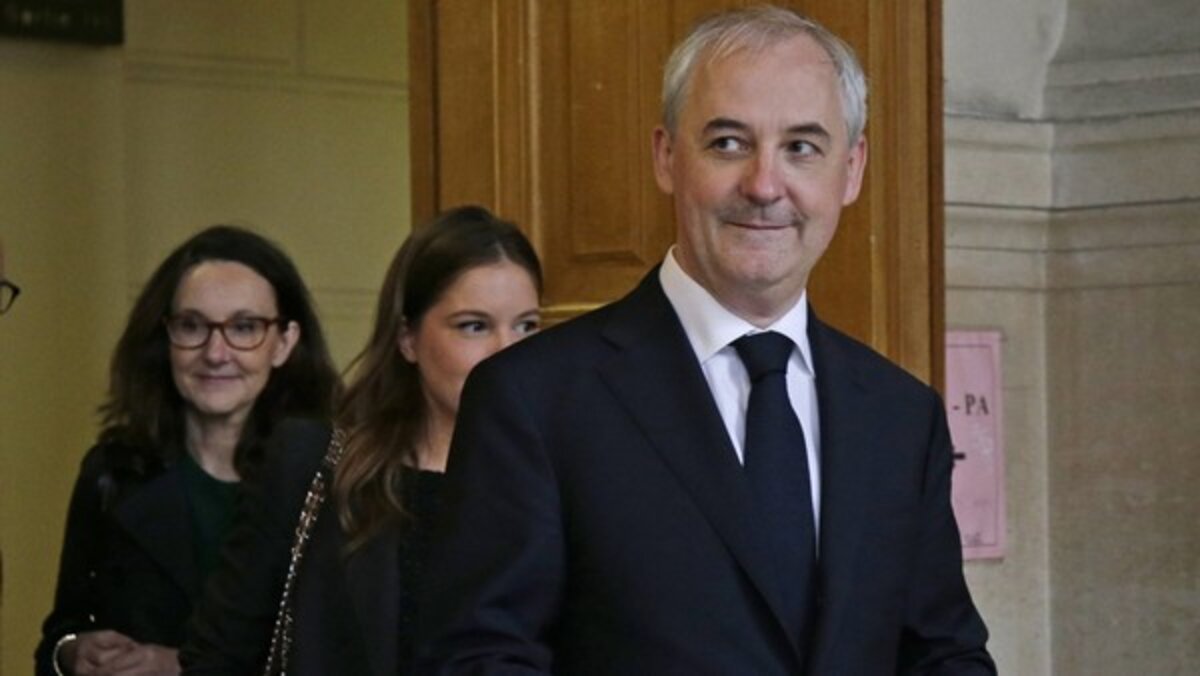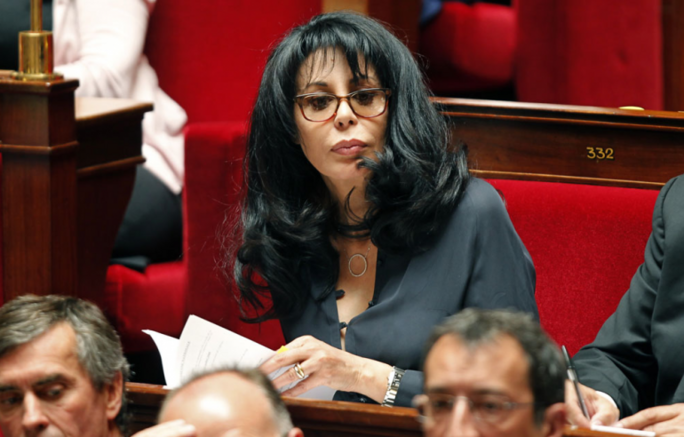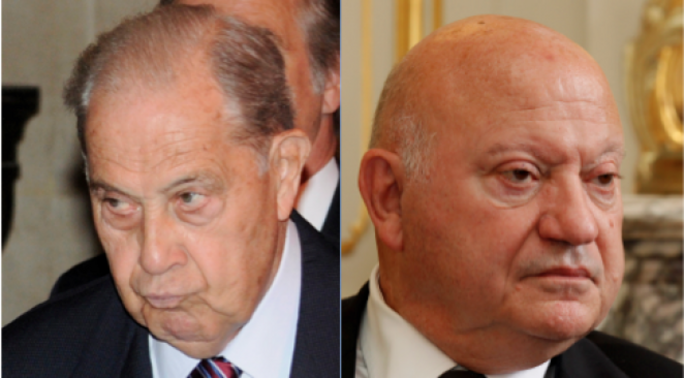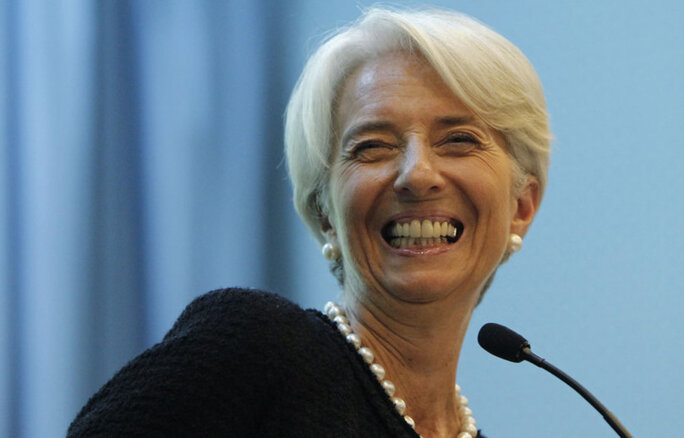On the surface they are four criminal investigations that have nothing to do with one another. In each one the judges and lawyers of the French justice system have sifted through the evidence and applied the law as they see fit, and there is no question here of seeking to re-try those cases in their place. Yet the judicial handling of the affairs involving former President Nicolas Sarkozy's advisor turned banker François Pérol, former centrist minister André Santini, film director and socialist government minister Yamina Benguigui, and former minister and current managing director of the International Monetary Fund, Christine Lagarde, says a great deal about the French justice system and its foibles. In particular it illustrates the fact that some judges have not grasped the full extent of the real cost of corruption, whether in financial, social or political terms.
The first point to make, at the risk of rejecting some received wisdom, is that there are prosecutors who sometimes show themselves to be more combative than certain sitting judges. The prosecution authorities in Paris, for example, immediately appealed against the decision by the 11th chamber of the criminal court in Paris – which specialises in financial and economic cases - not to pass any sentence on Yamina Benguigui. By the same token the national financial prosecutions service also appealed last Thursday after François Pérol was acquitted by the court's 32nd chamber, which was recently set up to deal with financial crimes and tax fraud. In the Benguigui case the new body for transparency in public life, the Haute Autorité pour la Transparence de la Vie Publique (HATVP), was exasperated by the trial outcome, while in the Pérol affair it was the turn of the financial prosecutor's office to be dismayed by the verdict.

Enlargement : Illustration 1

In the Pérol case the 32nd chamber delivered a judgement that was as learned as it was long (all 163 pages of it), and which comes close to judicial nitpicking. Basically, the court considered that the former aide to Nicolas Sarkozy at the Elysée had committed no crime in overseeing as presidential advisor the fusion of two French banks, the Banques Populaires and the Caisses d'Épargne, and then, in 2009, agreeing to become the head of that newly-created entity, the BPCE.
Pérol, who was Sarkozy's deputy chief of staff at the Elysée, was suspected of having been “closely” associated with talks over the banks' merger, then of being catapulted in as new boss of the BPCE – the parent company of Natixis bank – even though the law imposes on public servants and officials from public service administration a waiting period of three years before joining a business on which they have given advice or drawn up proposals.
Today there are some judges who consider that the case was sufficiently strong to have allowed François Pérol to have been convicted. They also regret the signal that this resounding acquittal sends in the direction of certain oligarchs in the senior ranks of the civil service and the world of finance, who will not be dissuaded from succumbing to the delights of conflicts of interest or the joys of moving seamlessly from the public sector to lucrative roles in the private sector, a practice known in France as pantouflage.
In the Benguigui case the Paris prosecutor had recommended to the court a sentence of a four month suspended prison term and a fine of 15,000 euros against the film director and former junior minister, who was in charge of the French language and culture abroad under President François Hollande. Yamina Benguigui was accused of being responsible for repeated “omissions” in her ministerial declaration of wealth and financial interests, in relation to shares in an audiovisual production company. She simply admitted to several mistakes having been made, which according to her were not of her own doing.

Enlargement : Illustration 2

Yamina Benguigui, who is still today a councillor in Paris, was the first politician targeted by the HATVP, a body that was set up after the 2013 Cahuzac affair (see Mediapart's exclusive stories on this here) to tighten the controls on personal financial declarations and to reduce the risk of conflicts of interest among politicians.
In March 2014 the HATVP signalled its new powers, given to it under 2013 laws on transparency, by referring the case of Yamina Benguigui to the judicial authorities, suspecting her of having knowingly hidden on three occasions the shares that she held in a Belgian company, shares that were bought for just euro but which acquired value later.
In its judgement the court considered that “fraudulent intent” had certainly been demonstrated. But, as it is permitted to do under the law, the court chose not to pass a sentence having “taken into account the complete absence of any [previous] conviction”, the “deposition of a rectified [wealth] declaration, even if belatedly” and “her professional and political career”. Thus, by some astonishing reasoning, the court accepted that the politician was guilty of an offence reserved for politicians, while declining to pass sentence because of her political activities. It is the kind of paradoxical reasoning that exasperates the average person in the street, especially when they see the justice system being so tough with the weaker and less powerful members of society.
How can one explain the clemency of the judges in these two cases? There are a number of factors involved. These include the lack of social mix within the judicial world, the fact that all are trained at law school then at the national judicial training school, the École Nationale de la Magistrature (ENM), the tradition of conservatism in a judicial body which still identifies itself with the institutions and powers of the day, the fear of the vagaries of politics and of changes in governments, a certain conformity and caution to preserve their career interests. All these phenomena are known about and, too often, they combine to downsize or bury political-financial cases. “Some live in a bubble, they practice law without knowing anything about life,” says one angry senior judge in private.
Another factor is the complexity of the French judicial system. By launching numerous appeals – to the courts overseeing investigations, then to the court of appeal then to the highest French court the Cour de Cassation – lawyers representing powerful individuals know that one day they can hope to unearth a procedural error that will weaken the case, or even get their case examined by a judge who is more reasonable, more decorated, more understanding than the previous one. “Courage is not a very widespread or rewarded virtue among us,” sighs one senior judicial figure. There are, of course, some notable exceptions, but examples of free and bold individuals such as prosecutor Éric de Montgolfier – famous for prosecuting businessman Bernard Tapie – are quite rare within the judicial system.
Anatomy of an acquittal
The acquittal of centrist politician André Santini last Wednesday, September 23rd, received less media coverage than the other cases but is just as revealing about the workings of the French judiciary. The current Member of Parliament (MP) for the UDI party and mayor of Issy-les-Moulineaux in the south-western suburbs of Paris, was cleared by the court of appeal in Versailles in the so-called Hamon Foundation affair – which dates back to 2003.
In that year the businessman and art collector Jean Hamon was reported by his accountant for a series of alleged embezzlements. Jean Hamon was questioned then held in temporary custody for 15 days, suspected of several counts of misuse of company assets and in particular for having over-billed for the cost of storing and maintaining works of art due to be part of a future prestigious museum in Issy-les-Moulineaux, the Fondation Hamon or Hamon Foundation. The collector had agreed to donate 192 works of art with an estimated value at the time of 50 million francs, equivalent to 8 million euros. The problem was that this project, promoted by former interior minister Charles Pasqua and André Santini on the general council of the département (akin to a county) of Hauts-de-Seines, south-west of central Paris, would never see the light of day.

Enlargement : Illustration 3

In particular Jean Hamon was suspected of having hired a friend of André Santini, in order to return the favour to the councillor on the Hauts-de-Seine council. Moreover, the company which paid this Santini ally was financed with public money, which came from an association called the Syndicat Mixte de l'île Saint-Germain. This association was co-founded by the Issy-les-Moulineaux commune and the Hauts-de-Seines council, and was co-run by André Santini and Charles Pasqua.
The aim of this association, set up in 2000, was to to create a museum of contemporary art on the île Saint-Germain at Issy-les-Moulineaux. Announced to some fanfare in 2001, the museum was in theory to house 200 works of contemporary art, prime works by César, Dubuffet, Arman and Garouste, all donated by Jean Hamon. He was a multifaceted character, for this art collector and new patron of the arts was also a property developer. According to Pasqua and Santini the Hamon Foundation was due to open in 2004. In the meantime the association had to pay Jean Hamon the costs of conserving, maintaining and exhibiting paintings that the businessman had committed to donating to the future museum, and which were then in his château in the Yvelines département south-west of Paris. André Santini's ally, meanwhile, had been hired to organise school trips to see the art works.
To make way for the future museum several dozen trees were cut down and the Syndicat Mixte de l'île Saint-Germain association paid out significant fees on feasibility studies. But an environmental association and local residents appealed against the project and first got the plans frozen, then succeeded in getting the planning permission overturned altogether. But though the museum project had fallen through Jean Hamon continued to receive large sums for the storing and conservation of his paintings. According to the judicial investigation into the affair some 800,000 euros of public money was involved.
Hamon was placed under formal examination – one step short of charges being brought – for “forgery and use of false instruments”, “misuse of company assets”, “fraud” and “receipt of the proceeds of embezzlement of public funds” by the investigating judge Nathalie Andreassian in September 2003. She also put ten senior officials and managers at the Hauts-de-Seine council under investigation, as well as the Paris-based architect Jean-Michel Wilmotte, and finally, in 2006, André Santini and Charles Pasqua.
A report from the regional finance watchdog the Chambre régionale des comptes (CRC) for the Paris region, the Île-de-France, was added to the file in 2007. It detailed the total cost of the aborted project at more than seven million euros. The financial experts on the watchdog pointed in particular to the doubling of the provisional cost of creating the museum, which mysteriously went up from 6.8 million euros to 13.4 million euros. The cost of hiring and maintaining the paintings at Jean Hamon's home was equally criticised. The CRC also singled out a body called SEM 92, which was used by Pasqua and his allies on the Hauts-de-Seine council for handling major property projects. As the project manager for the museum project, SEM 92 was guilty of “failings” and “irregularities” in the awarding of contracts, which several public works building firms benefited from, according to the CRC report.
After Nicolas Sarkozy became president of France in 2007, the case was followed with close attention by his justice advisor Patric Ouart at the Elysée. The judicial threat was a real one, for the Hauts-de-Seine, the wealthiest département in France, had served as a vehicle for nearly all of the president's inner circle after Charles Pasqua had handed over the reins of it to Sarkozy himself in 2004. The government was worried when Jean Hamon's lawyer, Philippe Guméry, publicly expressed his surprise that his client was being reproached for the receipt of public funds received while Charles Pasqua was president of the département from 2001 to 2003, even though he continued to receive funds without facing any legal action from 2004 to 2006 action. In other words, the period during which Sarkozy had succeeded Pasqua as head of the département.
At the beginning of 2008 the same lawyer, Philippe Guméry, asked the investigating magistrate to question as a witness the former director general of services for the département, Rachida Dati, who at the time was Sarkozy's justice minister. The judge turned down the suggestion, but the message was received on high. The prosecutor's office at Versailles, west of Paris, carefully ran down the clock. Though the investigating magistrate, Nathalie Andreassian, had already concluded the investigation, the prosecutor Michel Desplan waited for more than a year to make his recommendations about what action to take. And when he did so, at the end of 2008, he asked for the judge to reopen the case, and to dig deeper into the allegations of “conflict of interest”.
Meanwhile André Santini had become been junior minister for public services in 2007, and certainly intended to remain in the government, even though it was clear that the investigating magistrate wanted to send him to stand trial. The procedural warfare stepped up a notch. While insisting that his client had done nothing wrong in the affair, Santini's defence lawyer, Grégoire Lagarge, asked for the investigation to be annulled, first at a lower appeal court then at the Cour de Cassation. But the delaying tactics did not change anything, and the validity of the investigation was upheld. André Santini finally resigned from government in June 2009 and returned to being an MP.
Judge Nathalie Andreassian then reopened the case as she was obliged to do. She also added procedural elements from the well-known Elf oil scandal of the 1990s, of which there were echoes in the Hamon Foundation affair. Indeed, back in 1990 another plot of land at Issy-les-Moulineaux had been at the centre of an astonishing transaction: the Elf Aquitaine group had sold this land for 200 million francs (about 30 million euros) to a company called Thinet, which had in turn sold it just a few days later for 300 million francs (45 million euros) to the council-run SEM 92. In other words, it had been a terrible deal for local taxpayers.
Around 60 million francs (9 million euros) in hidden commissions had vanished during the course of those deals, in an affair in which the names of Jean Hamon, André Santini and his brother Dominique Santini, a businessman, had already featured.
Finally, in November 2010, Nathalie Andreassian completed the Hamon Foundation investigation for the second time and sent the file to the prosecution authorities at Versailles for their consideration. Nothing happened. Five months later, with the prosecution authorities still not having made their recommendations as to what action should be taken, the judge lost her patience and on April 6th, 2011, she sent eleven people to stand trial over the Hamon Foundation affair.
The criminal court at Versailles, presided over by judge Florence Perret, gave its verdict on January 21st, 2013, in a damning 104-page judgement. The former minister of the interior Charles Pasqua was handed a two-year suspended sentence with a fine of 150,000 euros and made ineligible for public office for two years. André Santini also received a two-year suspended sentence and was given a 200,000 euro fine and declared ineligible for public office for five years. As for Jean Hamon, he was given a two-year suspended sentence, a 200,000 euro fine and barred from running a commercial business for five years. All those convicted appealed.
The case was heard again before the court of appeal at Versailles in September 2014. The hearing was then interrupted at the request of defence lawyers, on the grounds that one of the judges present already had knowledge of the case. It resumed in May 2015, with the court prosecutor requesting that the verdicts and sentences passed at the first trial should be upheld. Charles Pasqua died in June, before the court could give its verdict.
That judgement was finally delivered last Wednesday, September 23rd. The 9th chamber of the court of appeal at Versailles, presided over by judge Patrick Wyon, reached precisely the opposite conclusion from the initial trial court. In a 46-page judgement (available in French here and here) the judges took apart that verdict at first instance, and the eight years of investigation, and André Santini was acquitted. The court took the view that none of the acts of financial negligence and none of the misappropriations that ended up frittering away public money were down to him personally. According to Santini's lawyer, the pugnacious Gregoire Lafarge, this verdict was no more than justice being served. The court also noted that, had he lived, Charles Pasqua, too, would have been acquitted. Thus there had been misappropriation of public money, yet no one was responsible for it. On the other hand, Jean Hamon was convicted and given a small fine for misuse of company assets.
If further proof is needed of the indulgence shown by some judicial officials when faced with influential and prominent people, one can consider the demand last week by prosecutor Jean-Claude Marin that the case against IMF boss Christine Lagarde in the Tapie affair should be dropped. As finance minister under President Sarkozy in 2008 Lagarde had been instrumental in allowing an arbitration to end a dispute between flamboyant businessman and politician Bernard Tapie and Credit Lyonnais bank. This arbitration controversially awarded Tapie 403 million euros, a payout eventually overturned on appeal in February 2015. Lagarde was investigated for alleged “negligence” for her part in the affair.

Enlargement : Illustration 4

The independence of the investigation carried out into this case by the judges at the Cour de Justice de la République – a special court that hears claims of ministerial misconduct – cannot be called into question as they are full-time sitting judges. But given that this political and fraudulent arbitration cost 403 million euros of public money, these three judges will have to accept responsibility for what they have done.
-------------------------------------------------------------------------
- The French version of this article can be found here.
English version by Michael Streeter


